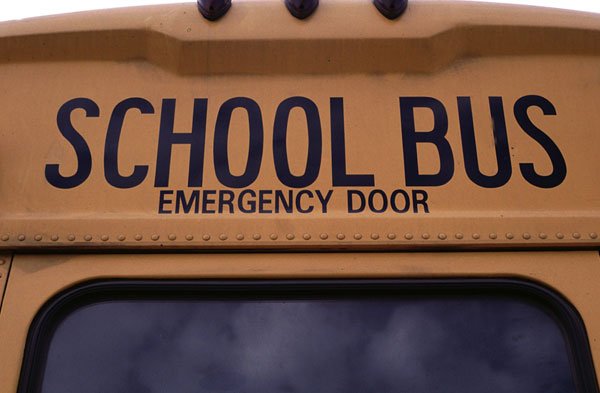Some say small increase isn’t nearly enough
The school district passed a resolution increasing residential developer fees $0.34, to $2.97 – still a far cry from the $9 the district needs to adequately accommodate its burgeoning student population, district officials said.
“Two dollars and sixty-three cents was meager,” said the school district’s facilities director, Rob Mendiola. He said that even with the small increase, the new fee is “not even close” to the amount the district needs. “Nine dollars is not a want, it’s a need,” he said.
Although a 1998 state law prohibits school districts from raising developer impact fees, the State Allocation Boar d recently authorized school districts to increase developer fees to $2.97. Districts can expect further support with a brand new bill scheduled to hit the State Assembly floor in the coming months, proposed by Assemblywoman Anna Caballero (D-Salinas). Caballero met with Gilroy City Council members, school board trustees and residents Friday afternoon to discuss Assembly Bill 2173, a bill that will give school districts the ability to levy higher fees on building developers, helping to provide schools for the students generated by new developments.
“This bill grew out of discussions I had last year with members of the Gilroy school board,” Caballero said. “We were all deeply concerned because our currents laws regarding developer fees are simply outdated. AB 2173 would ensure that developers pay their fair share of the costs to build the schools our communities so badly need to keep up with population growth.”
The bill aims to update the existing law by ridding it of anachronistic policies requiring schools to meet certain prerequisites before allowing them to impose a higher level of fees. The prerequisites include operating year-round schools and housing higher numbers of students in portables.
Unlike many school districts, Gilroy’s student population is growing by leaps and bounds. The resulting overcrowding in schools impairs the normal functioning of the district’s educational programs, the resolution to adjust fees stated.
A February 2008 snapshot generated by school facilities consultants, Williams & Associates, projects that new development will generate 1,720 grades K-12 students for the district in the next 10 years. Currently, the district educates 10,436 students. By 2026, the district expects that number to spike to nearly 14,000, largely a result of new developments.
“The amount of fees charged is not only reasonably related to the amount of need attributable to new development projects, but the fees fall substantially short of funding the cost of new school facilities needed for students from new development,” the report stated, justifying the mere $0.34 increase.
For a 2,500-square-foot home, an increase of $0.34 per square foot would result in $850 tacked on to the price tag. From 2004 to 2013, the city council approved the development of 4,300 units. With the recent fee increase, the development of 1,000 of those homes would mean $850,000 extra for the district, for a total of $7,425,000 in developer fees. If developers paid the $9 per square foot the district ideally needs, the price of a 2,500-square-foot home would increase by almost $16,000, an additional $16 million for the district if 1,000 homes were to be built.
School board president, Rhoda Bress, and Trustee Jaime Rosso voiced their appreciation for Caballero’s proposed bill and summarized the series of blows schools are taking as a result of underfunding.
“In regards to schools, it’s so ironic how many federal and state demands there are for improved student achievement,” Rosso said. “And we’ve worked very hard to do just that with declining resources. We’ve made cut backs at a time when we need more resources, not less. They work to counter the very goals and purpose we’re being asked to accomplish.”
“I agree completely,” Caballero responded. She presented herself as an example of the successes of a public school education.
“The challenge is having a dialogue about investment,” she said. “I spent 20 years in the public school system. I’m a huge investment. Taxpayers made that investment. I think they got a good return on their investment. Unless we make an investment in our youth, we’ll continue to see youth violence skyrocket. We either do that or we pay.”
At a joint city council-school board meeting held just prior to Caballero’s visit, the two groups discussed the school district’s dilemma. The school district turned to the council for advice or a helping hand.
“The students will arrive and we have to house them,” Superintendent Deborah Flores said. “We can’t go out and make the developers give us that money.”
At future meetings with developers, Councilman Bob Dillon suggested the district showing up to describe its predicament.
Back in October, representatives from Rancho Meadows discussed giving a cash donation and Tony Sudol of ACS Ventures explored the possibility with staff and trustees of paying for an extra crossing guard. The developers are among nine that have expressed willingness to meet a district-requested voluntary increase in district developer fees from $2.63 to $6.61 per square foot of new residential construction.
Even though some of the developers have small operations and are affected significantly by the voluntary increase, they recognize the importance of funding the district, said Michael McDermott of the Oak Grove project back in October. His voluntary increase will mean an additional $1.7 million for the district.
“The thing to do is to simply have someone from the district show up and say the district just can’t do this,” he said. “We (the school district) can’t afford it. You’ve talked nicely to them before. Maybe it’s hammer time.”















